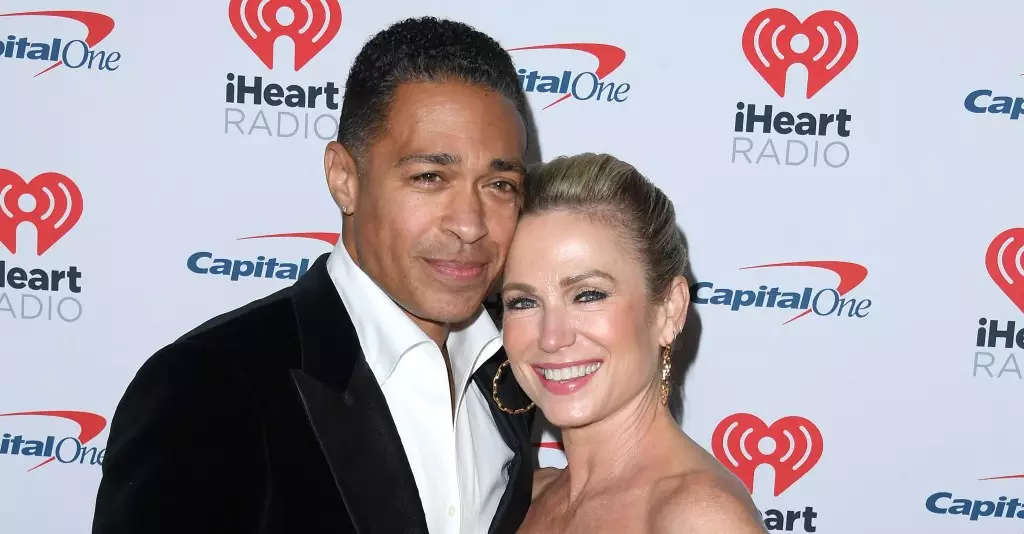In today’s fast-paced media landscape, anchors are often scrutinized not just for their news reporting but also for their appearance, especially during catastrophic events. David Muir, a prominent anchor for ABC News, recently became the center of a sensational controversy following his coverage of the devastating wildfires in Los Angeles. The dilemma ignited discussions about the relationship between personal presentation and the gravity of unfolding tragedies.
While reporting on the wildfires, an image surfaced of Muir using a clothes pin to adjust his ABC News slicker. This moment didn’t go unnoticed; it quickly went viral, resulting in a plethora of fashion critiques aimed at Muir. It became a talking point on a podcast featuring T.J. Holmes and Amy Robach, where they deliberated the appropriateness of Muir’s appearance amid such devastating circumstances. On their podcast, cleverly titled “Does This Fire Make Me Look Fat?”, the hosts weighed in on this peculiar mix of vanity and responsibility.
They first noted how Muir has been “ripped” for his choice of styling when he should have been focused solely on conveying the magnitude of the disaster. Robach, reflecting on their shared past working at ABC, voiced her discomfort—remarking that Muir’s concern for his appearance while reporting a tragedy seemed inappropriate. This point of view raises critical questions about how news anchors should comport themselves during coverage of real-life disasters.
The backlash that Muir experienced highlights a broader societal expectation of seriousness and somberness when it comes to reporting on tragedies. Robach articulated this sentiment with considerable emphasis, indicating that the visual of an anchor preening himself—against a backdrop of destruction—was almost a public affront to the individuals grappling with loss. The very fabric of journalism is often woven with the responsibility of empathy and sensitivity, making Muir’s perceived preoccupation with appearance a focal point for criticism.
This discourse isn’t limited to social media; it has also spilled over into mainstream punditry. The likes of Jack Osbourne and Donald Trump Jr. openly criticized Muir, while Megyn Kelly took her turn on air to share her insights. Such public condemnation illustrates how the media can quickly decipher character based on visual gestures, which some interpreted as a lack of focus on the dire situations that many were facing in Los Angeles.
However, as the discussion unfolded, Holmes and Robach also considered a more nuanced view of Muir’s role as a news anchor. They speculated about the logistical realities a news professional encounters while reporting live. The intricate dance of maintaining a professional appearance, managing microphone placements, and staying updated with the unfolding story can often leave little room for anchors to concentrate solely on their immediate surroundings.
Holmes provided perhaps the most crucial insight—that the pressure of live reporting often involves multiple people working backstage to ensure everything runs smoothly. He pointed out that appearances may be managed by producers or wardrobe staff. Such realities can skew the perception of an anchor’s preoccupations, creating a narrative that may not align with the hardships they’re covering.
Ultimately, the discourse surrounding Muir serves as more than a simple critique of one anchor’s appearance; it opens broader discussions on media ethics and the role of anchors during crises. News representation involves not just transmitting information but encapsulating the emotional gravity of events for viewers. As anchors navigate this landscape, balancing professionalism with the heart-wrenching realities of their stories will always remain a tightrope walk, subject to public scrutiny and interpretation.
The incident sparks a vital conversation about our expectations of media figures, the ways in which their presentation affects audience perception, and whether the industry can evolve in a way that honors the stories of those affected by calamity while allowing its anchors to remain human. David Muir’s case illustrates how quickly the line can blur between professionalism and personal expression in the eyes of the public.

Leave a Reply